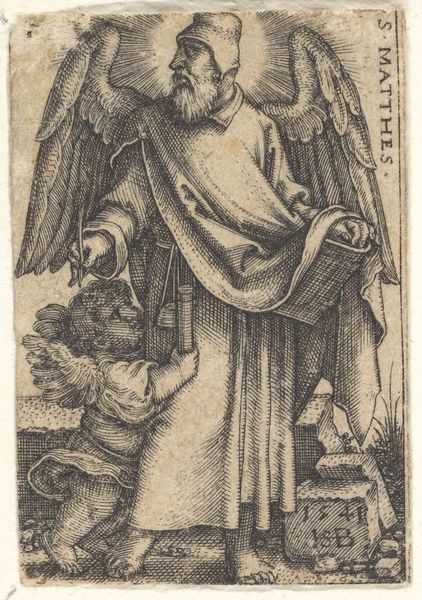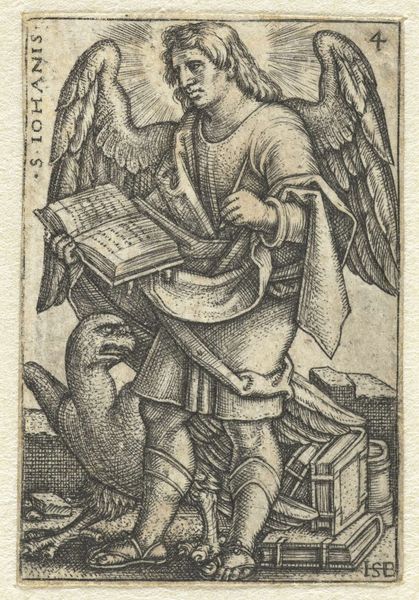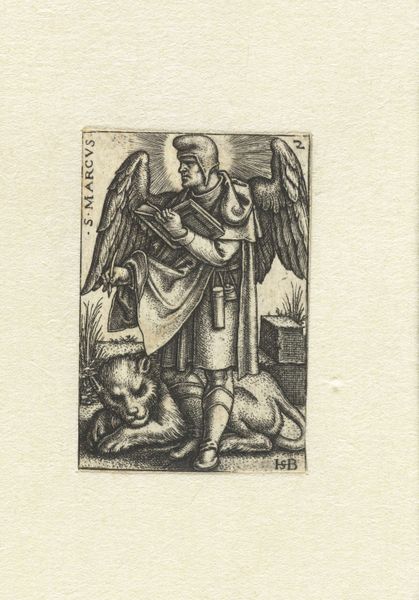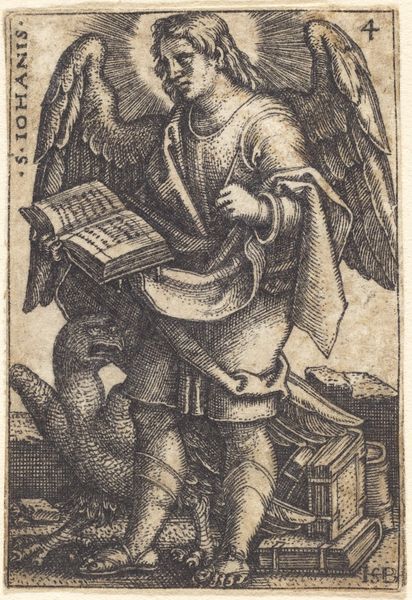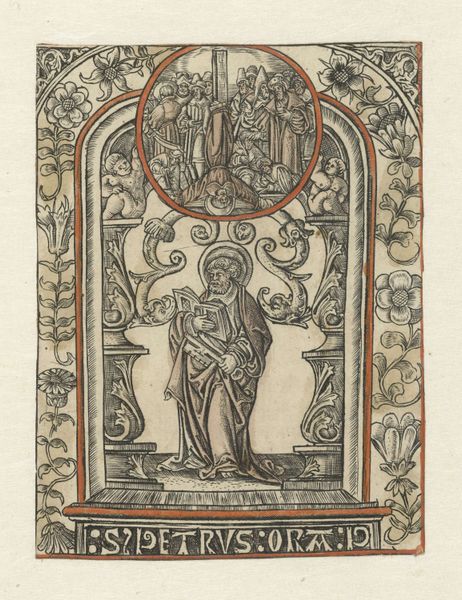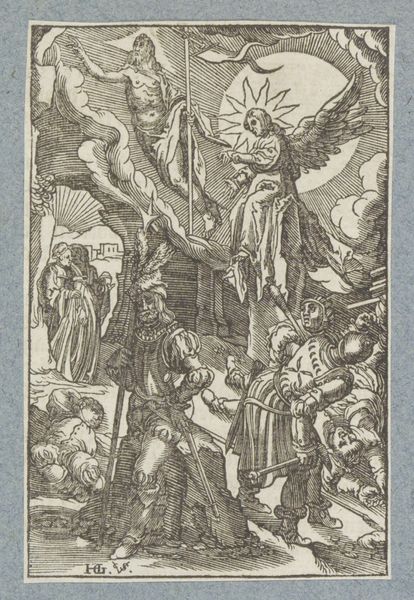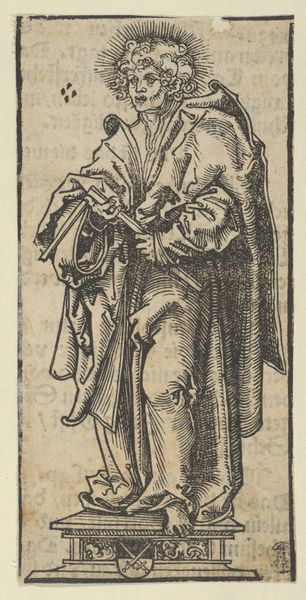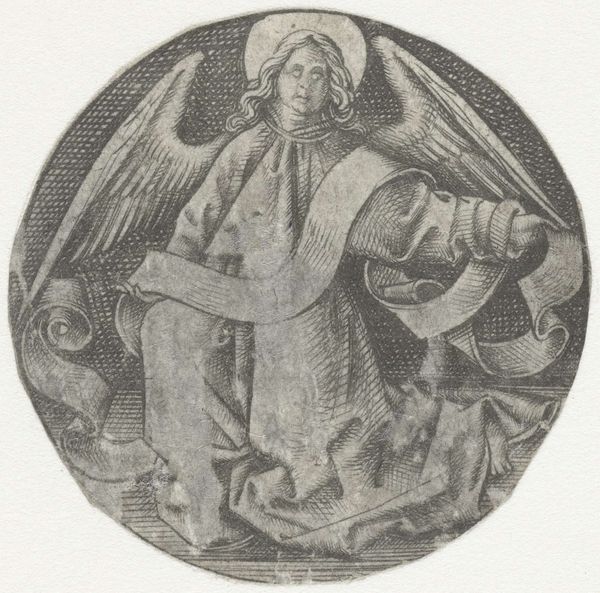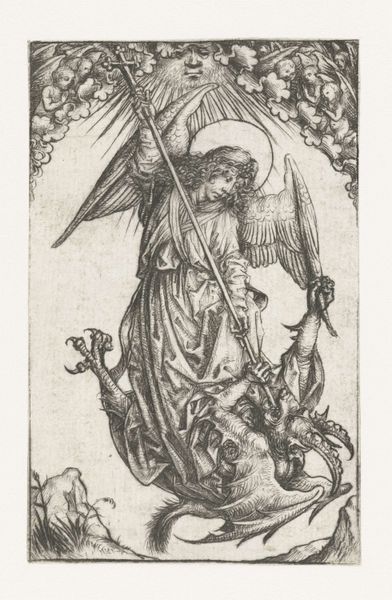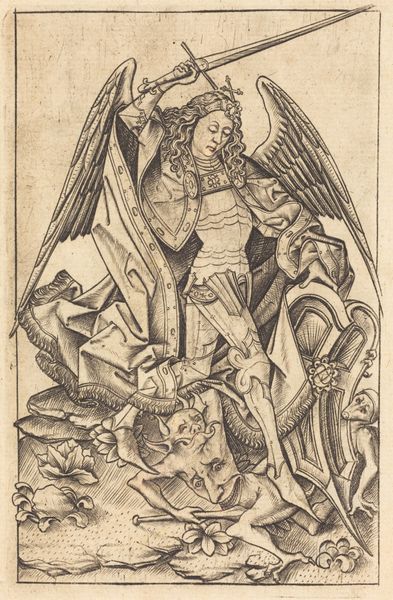
print, engraving
#
portrait
# print
#
old engraving style
#
figuration
#
northern-renaissance
#
engraving
Dimensions: height 43 mm, width 29 mm
Copyright: Rijks Museum: Open Domain
Editor: So, this engraving is "Matteüs" by Sebald Beham, created in 1541. It’s small, but incredibly detailed. The figure with the wings makes me think of an angel or saint... What symbols jump out at you in this piece? Curator: Immediately, the winged man *is* Saint Matthew, author of the first Gospel, represented here in his iconic form, which has roots that stretch back to ancient Mesopotamia. Editor: Mesopotamia? That's interesting! Curator: Absolutely. Consider the symbolic association of winged figures. The winged figure blends Classical personifications of Victory with Near Eastern protective spirits. This evolved into the visual language Christian art utilized for angels and saints. Note also the presence of the small angel; do you observe how this symbol links to inspiration and divine intervention, referencing Matthew’s role as a Gospel writer? Editor: Ah, yes, he's holding a scroll, maybe a quill! I also see he's holding an object, perhaps it could be a chalice, as he is caressing it? The lines really convey how important that chalice must be to him. Curator: Quite right. And it underscores that artists were not just replicating images, but also contributing to their evolving meaning, ensuring the stories continue to resonate across generations. He becomes both a vessel and an inspiration. What are your thoughts? Editor: That’s fascinating! It brings so much more depth to understanding the work beyond its surface. Curator: Indeed.
Comments
No comments
Be the first to comment and join the conversation on the ultimate creative platform.

